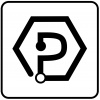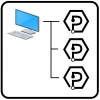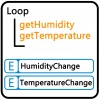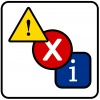General Phidget Programming: Difference between revisions
No edit summary |
No edit summary |
||
| Line 38: | Line 38: | ||
<br clear="all"> | <br clear="all"> | ||
---- | ---- | ||
[[Image:network_service_icon.jpg|link=Phidget Network | [[Image:network_service_icon.jpg|link=Phidget Network Server|100px|left]] | ||
[[Phidget Network | [[Phidget Network Server]] - Phidgets can be controlled and communicated with over your network- either wirelessly or over ethernet. | ||
<br clear="all"> | <br clear="all"> | ||
---- | ---- | ||
Revision as of 18:58, 28 April 2017
This page presents the general concepts needed to write code for a Phidget.
By this point, you should have installed the drivers for your operating system and the libraries for your specific programming language.
Phidget Programming Basics - Here you can find the basic concepts to help you get started with making your own programs that use Phidgets.
Data Interval/Change Trigger - Learn about these two properties that control how much data comes in from your sensors.
Using Multiple Phidgets - It can be difficult to figure out how to use more than one Phidget in your program. This page will guide you through the steps.
Polling vs. Events - Your program can gather data in either a polling-driven or event-driven manner. Learn the difference to determine which is best for your application.
Logging, Exceptions, and Errors - Learn about all the tools you can use to debug your program.
Phidget Network Server - Phidgets can be controlled and communicated with over your network- either wirelessly or over ethernet.





